David Suzuki & Thich Nhat Hanh in Conversation from Hoggan & Associates on Vimeo.
From my new favoriet blog (and website/company) prana.
David Suzuki & Thich Nhat Hanh in Conversation from Hoggan & Associates on Vimeo.
From my new favoriet blog (and website/company) prana.
Victoria Veenstra has work in The Green Lion Gallery. Located on 150 E Fulton in Grand Rapids, MI, Victoria will be showing work with Renee Zettle-Sterling.
Victoria's work, The Conversation Series, is a "chromagenic pinhole photographic series exploring the ebb and flow of conversations in monochromatic time between careers and life demands. A vusal quandary to the question 'what would a superwoman say if she had coffee with me today?' "
Really great work so make sure you stop by if your in the area. The gallery hours are simple enough, Fridays 5pm-9pm and Saturday 12pm-5pm, with a closing reception August 27, 7-11pm.
Sorry no images for the blog this time around, only a show card but that just means you'll have to come out to see the work in person and that's never a bad thing.
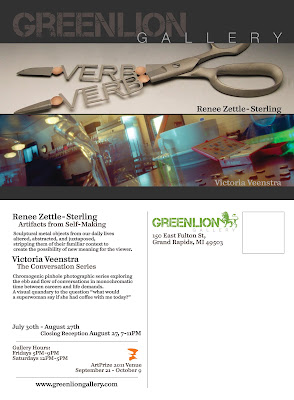
As time continually goes by with increasing speed it's an honor when an artist takes a moment to talk about the work they are creating. I recently had a wonderful conversation with Frank Hamrick about his work. I originally met with Frank at (the always inspiring) SPE and I contacted him to see if he would like to elaborate on his work and process.
 Currently Frank Hamrick is an assistant professor and the photography area coordinator for the School of Art at Louisiana Tech University. His work mixes photography, storytelling, handmade books and found objects which addresses the private environment of a home provides intermingled with personal secretes and memories. Examples can be found on his website or copies of his books can be purchased here.
Some may say the conversation runs a little long, but the answers are truly enlightening and I am grateful to have a conversation of such depth. Please give the article a read and visit his website or stop by store.
[q&a]
[Me] Your work is deeply poetic and moving. With the body of work entitled “harvest” I am responding to the amount of time involved in both growing a garden and book making. I see many parallels between the two. Have you drawn any conclusions about the relationship between the two processes?
[Hamrick] Yes. There are similarities between growing a garden and bookmaking and/or building a photographic body of work. They are process oriented involving multiple stages and faith - believing in something you cannot see. This is something I speak to my students about, especially in my view camera class where they are developing their own film and printing their photographs in the darkroom. Knowing your medium and materials well and believing in yourself are important when taking on a task that does not supply instant gratification. There will be mistakes, which is OK as long as you learn from them. The best way to learn how to grow a garden or make a book is to grow gardens and make books. It helps to have a teacher and handouts, but the best way to learn is to take that advice and apply it by doing the actual thing. And yes, I do believe growing a garden has been positive for my bookmaking. It taught me patience and understanding that doing something well or poorly in the early stages will affect the end result.
Currently Frank Hamrick is an assistant professor and the photography area coordinator for the School of Art at Louisiana Tech University. His work mixes photography, storytelling, handmade books and found objects which addresses the private environment of a home provides intermingled with personal secretes and memories. Examples can be found on his website or copies of his books can be purchased here.
Some may say the conversation runs a little long, but the answers are truly enlightening and I am grateful to have a conversation of such depth. Please give the article a read and visit his website or stop by store.
[q&a]
[Me] Your work is deeply poetic and moving. With the body of work entitled “harvest” I am responding to the amount of time involved in both growing a garden and book making. I see many parallels between the two. Have you drawn any conclusions about the relationship between the two processes?
[Hamrick] Yes. There are similarities between growing a garden and bookmaking and/or building a photographic body of work. They are process oriented involving multiple stages and faith - believing in something you cannot see. This is something I speak to my students about, especially in my view camera class where they are developing their own film and printing their photographs in the darkroom. Knowing your medium and materials well and believing in yourself are important when taking on a task that does not supply instant gratification. There will be mistakes, which is OK as long as you learn from them. The best way to learn how to grow a garden or make a book is to grow gardens and make books. It helps to have a teacher and handouts, but the best way to learn is to take that advice and apply it by doing the actual thing. And yes, I do believe growing a garden has been positive for my bookmaking. It taught me patience and understanding that doing something well or poorly in the early stages will affect the end result.
David Clark, a writer and farmer, once wrote something like, "If you want to have beautiful flowers, you have to start with beautiful dirt."
Having good raw materials to begin with is essential to both growing and bookmaking. That includes the physical materials like paper and ink, but also having good images and text to work with.
David also wrote, "The second kick of the mule is not educational." So make sure you learn from the mistakes that will certainly be made along the way.
My website professor in grad school, John Dunn, asked the class, "What is the hardest thing about making a website?" Some of us thought the correct answer might be making the site load fast even when using a slow connection or making sure the site is user friendly. John answered his own question, "Content."
The same applies to making a book. The work inside has to be something important and something I believe will be worth sharing with others.
When you tell people you are growing a garden, they ask, "What are you growing?" When you say you are making a book, they ask, "What is it about?" They are interested in what the content is. [Me] Do you have a predetermined sequence that relates to what you would like to see page to page, or is the physical construction of the book connected with a different process? [Hamrick] The sequence of images in the book relates to life span. The three short stories in the book reiterate that point since they address youth, adulthood and old age or conception, maturity and death.
Then there are design aspects of the book's layout intended to be felt rather than seen, but are important to successfully guiding the viewer through the book. Not always, but I often try to put similarly oriented images together. Usually a vertical image on the left side of a page spread is balanced by a vertical image on the right. The textblock shapes mimic the shape of the photographs they are paired with. The images often point subtly towards the center of the book. It might be the direction of a flower that leads the viewer's eye from that image, across the book to the image or story on the facing page. For instance, there are two photographs of hands appearing on the right side pages within the book. In both cases the hands point into the book, not outside the book. Depending on the subject matter, an image that is straight forward and centered might appear on the book's first page where it is not coupled with any text or image. I believe these details are important in the end to making the book feel right to those who pick it up and look at it.
I worked in the gallery at New Mexico State University during grad school. My first task was working at the opening of an exhibition that was hung just before I got hired. The director at the time, Mary Anne Redding, has a husband, Roger Atkins, who is a high end carpenter. I mentioned to Roger how nice the show looked. He replied that most of the time spent in hanging the show was for things the viewer never notices so they will instead notice the things you actually want them to see and feel. I am sure Roger applies that concept everyday when making cabinets and furniture. It is also something I strive to apply in the work I make.
I probably revised the book dummy for "Harvest" five times before I had the mock up I brought to this year's national SPE convention, which is where you and other peers saw the first glimpse of the book and provided feedback. I brought those responses home and made further revisions before producing the actual book. There are thirteen or fourteen various mock ups on my table capturing the slight changes in the book, whether it was image sequence, making the fonts consistent throughout the book, page layout or how a story was conveyed. I tell my students you have to be your toughest critic. So I do not see all those revisions and book dummies as an indication of having terrible layout skills or being a bad writer. I just see that as personally setting a high standard. The last thing I want to do is make a final edition and end up hating the book because I was too lazy or rushed to fix something I already knew was flawed early on in the process. There's a carpentry saying, "Measure twice, cut once." I guess for me it's, "Revise twenty times, then print and bind."
 [Me] The word “Harvest” inspires many different avenues of thought, do you ascribe more complex ideas to that word and your work?
[Hamrick] I usually have a small exhibit of my students' work at the end of each book arts course. Last summer I called the exhibition "Harvest" because I felt this was what they had to show for their work from that period of time. The word Harvest stuck in my head.
[Me] The word “Harvest” inspires many different avenues of thought, do you ascribe more complex ideas to that word and your work?
[Hamrick] I usually have a small exhibit of my students' work at the end of each book arts course. Last summer I called the exhibition "Harvest" because I felt this was what they had to show for their work from that period of time. The word Harvest stuck in my head.
I like book titles that create strong mental images. Two years ago I made a small edition book called "The Ship Is Going Down", which featured images made using Polaroid's positive/negative film that is no longer produced. The book I'm working on now is called "Letter Never Sent". The word Harvest is a strong word for generating mental images because the word is both a noun and a verb and can be used in different settings.
The photographs in my book "Harvest" were made over a period of several years. I tend to not work on one single subject for a set period of time, print them, exhibit them and then move onto the next body of work. The "Harvest" photographs were made while also working on images that have been used in other series, such as last year's book "Scars". There are plant images in both books. Last year I looked at the photographs I had and noticed several images of people, plants and things with scars. So that is what I had been unconsciously drawn to photographing for a while, and those were the images sticking out to me when it came time to make a book. Creating a book is a way for me to look at the photographs I have and then start to bring some method and organization to the chaos of my image making that can sometimes feel aimless when I am initially shooting the photographs. Particular images stick out to me on the contact sheets and through editing, a thematic body of work emerges. Making photographs for me is often intuitive and subconscious process that is felt more than seen, whereas bookmaking for me is the opposite - a much more considered, conscious endeavor.
There are particular reoccurring words and concepts in my work, such as "found", which appears in the titles of my books "Found Objects" and "i found it when i stopped looking". "Home" is another concept that appears periodically, like in my one off books "Keep Moving" and "There's No Place Like Home". Or the line, "Old people are like houses burning down " from my one of a kind "Wallet Book".
Making my books signals the end of a series of work or at least a finished chapter in that work or the end of looking at a subject from that particular angle. I have grown a garden for the last five years and plan on having a garden and photographing it each year in the future because it is something I enjoy doing and can see at the end of the day. "I turned this soil over today." "I pulled these weeds today." Plus I can later look at the flowers and vegetables and see them as an investment paying off. The seeds planted in the early spring yield profit in the summer. But by the end of last summer I felt as though I had photographed this particular garden as much as I could for a while. And so I decided it was time to bring some of those photographs together with other images I had and make a set body of work from them.
The last photograph in "Harvest" shows a dying sunflower leaning over, whose seeds have fallen to the ground. I made that photograph around the time my grandmother was dying last August. That image is paired in the book with a story about my great-grandmother's last garden, but the sunflower image to me is my grandmother dying and the seeds that have fallen onto the ground are the future generations. It was her handing over the responsibilities. She had done her part and her time was past. Now it is up to us.
 Harvest is the time to gather your crops and eat them or take them to the market. It is a set point in the life of that produce. You don't want to do it too early when there's not enough ready or too late when everything is past its prime and no longer wanted. It's all part of the cycle. The grower needs to take the produce into town so they can sell it and then there's the people who want it. The farmer also needs to clear the field so the ground can rest and then be prepared for the next season of planting. The same thing can be said for these photographs. I truly felt I was harvesting this particular group of photographs. I thought it was time to put them out in the world to share with other people so they could see them all together in the context of plant imagery addressing life span. It also allows me to make room both physically in my studio and mentally in my mind to start planning the next book project.
Harvest is the time to gather your crops and eat them or take them to the market. It is a set point in the life of that produce. You don't want to do it too early when there's not enough ready or too late when everything is past its prime and no longer wanted. It's all part of the cycle. The grower needs to take the produce into town so they can sell it and then there's the people who want it. The farmer also needs to clear the field so the ground can rest and then be prepared for the next season of planting. The same thing can be said for these photographs. I truly felt I was harvesting this particular group of photographs. I thought it was time to put them out in the world to share with other people so they could see them all together in the context of plant imagery addressing life span. It also allows me to make room both physically in my studio and mentally in my mind to start planning the next book project.
Another piece of work that was in the back of my mind when putting this book together was Neil Young's album, "Harvest". Although I should be clear none of the photographs or stories were inspired by that album and the book is not meant to be any sort of homage or comment on Young's work. The album "Harvest" was recorded forty years ago in various places, including a proper studio in Nashville, a barn on Neil Young's ranch and a concert at UCLA. So Young was gathering these recordings and putting them together, which became the album. It went on to being the most successful record released in 1972 and featured songs like "Heart of Gold", which was a number one hit on the radio.
The album resonated with people when it first came out, but the important thing is that after all this time it still matters to people, even to younger listeners like myself who were not around when it was first released. It has songs heard on the radio today and as a whole it is an album that people still gravitate towards.
My goal was to do something in the same spirit - to bring together a small group of photographs and writing that would make an impression on viewers today, but would also remain relevant years from now to those original people and generate a strong, positive response each time a new person is exposed to the book. I did not want to make a piece that would be seen as a dated trend when people look back on the book years from now. I once heard the way to know if you wrote something good was to put it on the shelf and then read it 75 years later to see if it still was strong material. My book is a harvest of photographs and stories, but I suppose it might be seen as a seed just now being planted. We'll have to check back in several decades to see how it holds up. [Me] The idea of impermanence and story are powerful notions when talked about in the same context. As people, I believe our stories that we share, and retell, often lack or include different details as we re-engage ideas. Books try to circumnavigate natural variations within storytelling. It appears in your artist statement you are trying to overcome this natural suggestion of “book as document” and bring forth classical storytelling - is this an aspiration of “Harvest”? [Hamrick] It's interesting you say that. The other day I was listening to an interview on the radio about court cases and how victims will naturally tell their story slightly differently each time, such as to the police soon after the crime occurs and then later to the jury in court. The opposing attorney will place emphasis on those slight variations in the victim's story in an attempt to have that testimony seen as being flawed and therefore have the accused acquitted.
I tell my students there are two extreme ways of looking at storytelling and what pieces of work are about. One is that a piece of work can inspire the imagination of the reader/viewer because the artwork exists as a point of inspiration and is open to interpretation. The ceramics professor I work with, Mary Louise Carter, said she looks at abstract art like she listens to instrumental music. "I take what I need from the work." There is no person there telling you this song is about love or this painting is about anger. Mary Louise saw a postcard of my image "Intertwined Carrots" and responded, "Carrots in love." whereas the produce man at the grocery store might view that same image as a couple of deformed looking carrots he would never be able to sell.
 The other extreme of storytelling and art making is to have an end goal in mind and make sure the viewer/reader gets that exact message. I suppose that is what you mean by the "book as document" where the story is put down on paper and viewed as, "This is the story. This is how it is told. This is what it means" much in the same way as a song appears on a record and then many fans feel that is the arrangement of how the song should always be performed. Sometimes doing this is easy, sometimes it is difficult and many times it can be boring, not only for the creator, but to the listener as well.
The other extreme of storytelling and art making is to have an end goal in mind and make sure the viewer/reader gets that exact message. I suppose that is what you mean by the "book as document" where the story is put down on paper and viewed as, "This is the story. This is how it is told. This is what it means" much in the same way as a song appears on a record and then many fans feel that is the arrangement of how the song should always be performed. Sometimes doing this is easy, sometimes it is difficult and many times it can be boring, not only for the creator, but to the listener as well.
Photographs denote something. They show. The photograph "Intertwined Carrots" shows one carrot wrapped around another carrot. Photographs can also connote. They can suggest. This photograph shows two carrots, but for many people it also carries a sensual connotation.
I am most interested in photographs that serve as metaphors to ideas beyond what is obviously seen in the image, even if it inspires ideas in viewers different from my own. I like looking at others people's photographs that leave room for me to be part of deciding what this work means, or at least what the work means to me. So I try do the same for viewers looking at my work, leave room for them to be part of the process. [Me] Is there a gallery component to “Harvest” or to any of the other handmade books you have created? Or is the photography and accompanying printed elements primary focused in the art of the book(s)? [Hamrick] I have done a couple of pieces that exist only as books, such as last year's "Chasing The Sun", which I view as my best example of an artist's book. Its content is a seven panel, tea stained, accordion fold out. The tea stain mimics the southwest landscape I experienced while going to graduate school at New Mexico State University. This book will be included in a group exhibition this August at the McKinney Avenue Contemporary in Dallas.
Like many of the images in my other photographic artist's books, the photographs in "Harvest" have appeared as individual framed prints in various group and solo exhibitions. Although there has not yet been an exhibition of just the "Harvest" photographs, since these images only recently appeared together as this particular body of work.
"Harvest", the book, was in a book fair this July in New York City. The book will be exhibited next at the Newspace Center for Photography in Portland, Oregon in August and then will be included as part of a solo exhibition here at Louisiana Tech University in late October. The book may be exhibited in some additional shows this year, but the details are not confirmed at this time.
I compare the individual photographs to songs, and the book can be compared to an entire album - a cohesive body of work with liner notes and cover art. So a single photograph can stand on its own as a piece of work, just as a single song can appear on the radio. Or the book can be viewed as a larger piece of work, like an album you listen to from beginning to end. I do not see the book as a monograph, which simply reproduces the images, like a catalog from an exhibition. The book is a handmade piece delivering a cohesive idea that is not fully expressed by any single image viewed alone from the rest of the book.
The book's construction includes handmade rag paper and letterpress printing, along with more contemporary processes, such as InDesign layout and Inkjet printing. The first edition exists in a limited quantity of 25 soft cover books and 25 hardcover books I printed and bound myself.
I think of "Harvest" as an artist's book - a piece of work. etsy.com/shop/frankhamrick

Because it's the weekend... New work here next week.
Always choice. Next week on the blog, an artist discussion. Stay close. Stay safe. More to come.
This is a post by Jörg M. Colberg originally posted on the up-and-coming Google+ (now G+ or has it always been G+?) talking about a photo book. It's an interesting, straight forward "experiment" (his description) about how to incorporate video with a book (review). It really makes me want to head to ebay and do a little digging but I assume my search will not yield instant gold the first time (so mine is going to take a bit of digging). I do think I'm going to look about a bit and see if I can't come up with something of the same to share. I like this idea a lot. Until I get my own interesting video up about a book, enjoy his… Here is the G+ link but also the embedded youtube video:
For those of you wondering…I have yet to join G+
I happen to like the suspense.
Cheers.
Yes.
The Belle Brigade - Losers from David Altobelli on Vimeo.
David Altobelli is amazing. This one's nice too...
Sia - I'm in Here from David Altobelli on Vimeo.
I haven't had a music friday in awhile but this hit the radar and I am really looking forward to it. I really dig M83. In other music news, I saw Kurt Elling on Wednesday and had my mind blown. He is always impressive. He released a fairly new album as well called, "The Gate" as in, "Swings like a...". Choice. New work on the blog next week...hopefully...have a good weekend!
This could be cool. Although the winters are probably going to be quite cold...
The Rabbit Island Artist Residency Project in summary:
"Imagine a remote, forested island in the largest body of freshwater in the world.
Now imagine living on that island and being a part of one of the most unique and challenging artist residencies in the world.
Rabbit Island is that island, and with your help, Rabbit Island will become that residency."
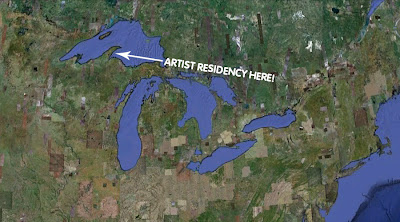 I hope it gets off the ground.
I hope it gets off the ground.
I recently came across a book sent to the Photography Department at GVSU called reframing photography by Rebekah Modrak with Bill Anthes (by the Routledge Group). I think it's particularly strong in two ways...they nicely break the book into two themes, theory and practice while also providing extensive online content to complement the book. Personally I feel that allowing both theory and practice to breath on their own allows photography, at the introductory level, to categorize information in such a way that allows theory to receive the importance it demands. Often times emphasis is placed on craft, or technical details, while theory and conceptual ideas are left as secondary notions. I also feel the additional online content adds more points of discussion that can be integrated back into conversations and discussions.
And yes, it does provide an opportunity to promote my own work... but in my opinion, having a resource (other than the tumblr-photographer-blog-excitment that's going around) where anyone can "discover" a new-to-them artist centered around a published book, creates a stronger foundation for photography.
Check out the site if you can. There is a series titled In Their Own Words which allows artists to speak first hand about their work.
www.reframingphotography.com/
 Always more to come...
Always more to come...
I thought I'd hit the eastcoasters with this mainly, but if your in the Adirondacks, check out the opening for Kyle Ford and Second Nature at 7444 Gallery. I've seen bits and pieces of this show along the way and can say I'm always happy to see it on the wall.
A little about the work:
I am fascinated with the way we represent the natural world by preparing it for display and visual consumption. Decided manipulations like selective preservation and engineered wilderness, act as a lens to explore ideas of mediated experience, perpetuated aesthetics, and transformative hyper-reality. This series is a catalogue of the varied ways we go about [re] contextualizing the “natural world,” and thus, redefining the way we perceive it.

 So if you're around check it out.
Opening Reception: Saturaday, May 14th from 8pm and runs though June 4th
Have a good weekend...
So if you're around check it out.
Opening Reception: Saturaday, May 14th from 8pm and runs though June 4th
Have a good weekend...
Once again I am honored to feature the work of another artist on this blog. Rafael Soldi has been kind enough to answer questions and discuss his work. I was able to sit down first hand and talk about his process but now I have the opportunity to bring some of those original thoughts, along with new ideas, to a wider audience. His work is deeply moving and the discussion brings to light context, origination and direction. Please read on and visit his website to see more work by him. The Artist Statement for: SENTIMENT (In progress) For over three years my work has focused on my cultural transition and its implications as I come to terms with my homosexuality. I drew attention to my childhood, my family and the environments that surround me. Eventually I turned my camera towards my now defunct relationship, which became pivotal in defining my present-day identity. Now I turn my camera towards myself, as I fight to reconstruct a life without the very thing that I thought defined me. Sentiment emerges from my longing to photograph feelings that are sui generis, manifested uniquely through my person. These images represent my struggle to surface from darkness, panic and hopelessness. Just as I once escaped my motherland to pursue a foreign one that welcomed me wholly, I now find myself escaping something foreign which has taken residence in my body and have turned the camera on it in hopes of a full exorcism. **** [q&a]
I would like to focus on the series Sentiment because this is the work we spoke about but please do not feel constrained to only talking about that.
John Szarkowski once referred to narrative photography in the personal context as, “a way of living” do you feel your photography has evolved into this practice?
Absolutely, what a great reference. As my work develops I have become less concerned with bringing predetermined meaning to my images but rather allow for the conceptual integrity of a project to be born from within itself. At some point with personal narrative the work turns so personal that it becomes a visual reflection of life itself, to the point where the process becomes instinctual and henceforth a way of living. I think Szarkowski is referring to the power of personal photographic narrative to channel life, its ability to reference our subconscious and unfold it before us. Sometimes it is even a bit frightening when I realize that my photographs know me better than I know myself, as I worked through my breakup there were things I was perfectly comfortable communicating with an image but incapable of expressing with words. For me it is performance in a way, the photograph acting as a tool that fetishizes life –you can see this in Tina Barney’s work, David Hilliard or even Doug DuBois. Seeing their personal lives unfold right there on the pages of their books is quite bizarre… you can see the way each has turned their image-making into a way of living. But back to the performative aspect, I don’t really document my life like Barney or DuBois do; I interpret it and symbolize it and sum it up into gestures that, even though sometimes literal renditions of one specific moment, stand for a larger emotional metaphor. In this respect I’ve been more aware of works by Elinor Caruci and John Arsenault.
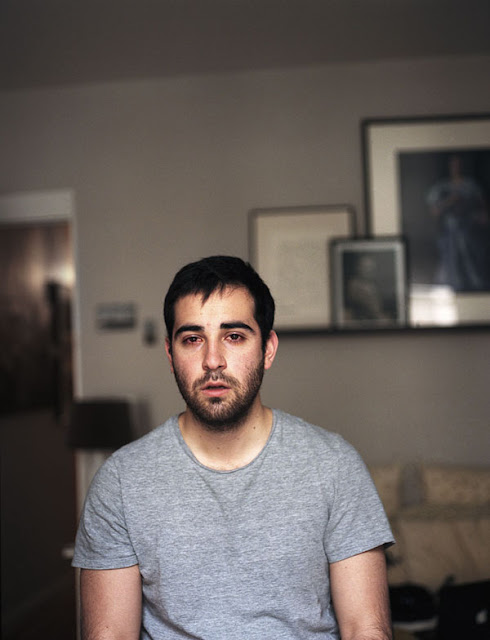 Your photographic work manifests itself in deeply personal narratives; does this translate into your understanding of time, as a reflective awareness, anticipation of a forthcoming future or something else entirely?
Your photographic work manifests itself in deeply personal narratives; does this translate into your understanding of time, as a reflective awareness, anticipation of a forthcoming future or something else entirely?
There comes a point in deeply personal work in which the line blurs and you find yourself living in your work, channeling reality through it, instead of channeling your work through reality. When your personal life directly informs your work it’s hard not to think about time and the future, knowing that those factors will be active facilitators of your professional practice and creative process. For almost two years now my work has been very dark, I have used photography to explore and understand feelings unlike anything I’ve ever felt: loneliness, pain, regret, fear and loss. My project Sentiment became an exorcism of sorts, a cry for help and a violent discharge of horrifying emotions. With time I learned to live this way and I produced work that I considered powerful and important, so the idea of time became a very scary thing.
You mentioned reflective awareness and anticipation of the future. As time passed by I have slowly healed and I’ve shifted my focus towards my career, a new life in a new city and new friendships. All of the sudden life is looking up and you’d think this would be a great thing, but it’s terrifying. I ask myself, what am I supposed to make work about now? Pictures of a very happy life sound kind of lame. I’ve discovered that I have spent so much time living IN my work that now I’m afraid to escape it. So, yes, these personal narratives do affect my understanding of time and my grasp of a forthcoming future. This work contains universal struggles and emotions, do these ideas resonate with you at the time of creation or is considered on a different level?
It depends, each photograph has been made in a very specific context, in very different places both physically and emotionally. Some images were produced with a specific concept in mind, while some were a gut reaction to an abstract feeling. Some were made with one intention and the results surprised me and lead me to something else entirely. For example, the image titled “Panic” is quite literal, it was taken promptly after a powerful panic attack; with the exception of moving some distracting things out of the frame, the space and myself looked the same and I was still in distress when this was taken. In the case of “You’re Here, I’m There,” I went in knowing the title before I even took the image. The image I had in mind was completely different, it featured me nude wrapped in this large map. As I kept shooting things changed and I felt more and more angry, so I pointed my camera down and attacked the map with my hands while pushing the cable release with my knees (I almost always shoot alone). It was the last frame in the roll and the only image I took of this composition and it just worked, I never expected anger to become such an important part of the image. In the case of “Bajo Tu Manto,” it was an instinctual response to an urge to make that image… I’m still figuring out what it means.

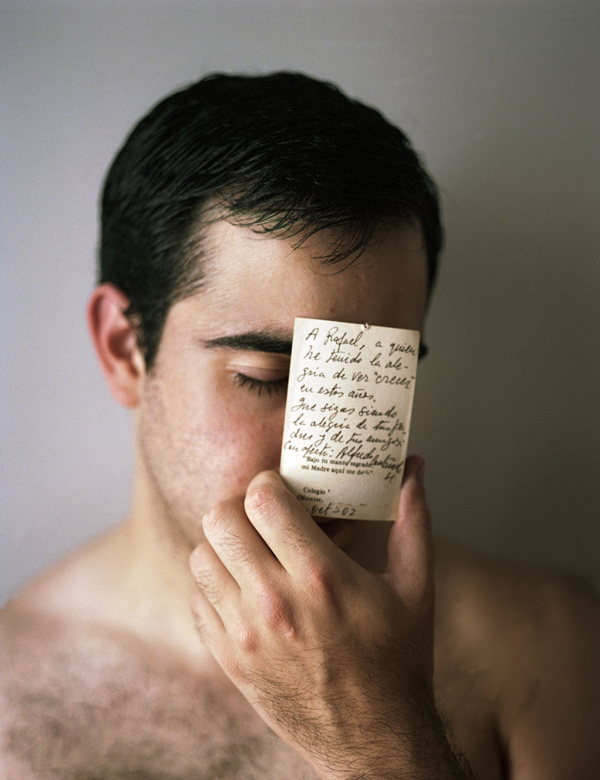 Your images embody a particular color palette, how do you anticipate or consider the use of color when approaching this work?
Your images embody a particular color palette, how do you anticipate or consider the use of color when approaching this work?
Yes, I always try to stick to a specific palette. I don’t think about it much, I just respond to it aesthetically. I don’t like saturation or very intense colors; they are distracting and take away from the content of the work. There is a place for everything, I guess, sometimes I feel extreme color is used as a crutch to compensate for boring content. I also always use the same low-contrast film and only shoot with daylight which probably contributes to the aesthetic of my work. The series Sentiment has a very poetic sequencing between object and image, how are you concluding what the story should embrace? Is there a place where you would like to see it go?
The addition of objects to the series is very recent and I am still unsure about its exact purpose. For now I am calling it “evidence,” as these are things that are surfacing in my life unexpectedly, as evidence of the relationship that once existed. In the series I also photograph objects, which mostly hold symbolic meaning: a pocket watch that references the time that has passed, that which is to come and that which presently heals. Or the image titled “21 Reasons Why I Love You”, which features 21 balloons my ex-boyfriend gifted me on my 21st birthday, each representing a reason why he loved me. Now I look at this image and the balloons no longer represent unconditional love, they rather resemble a dark cloud, an omen of what’s to come and the last two years of my life.
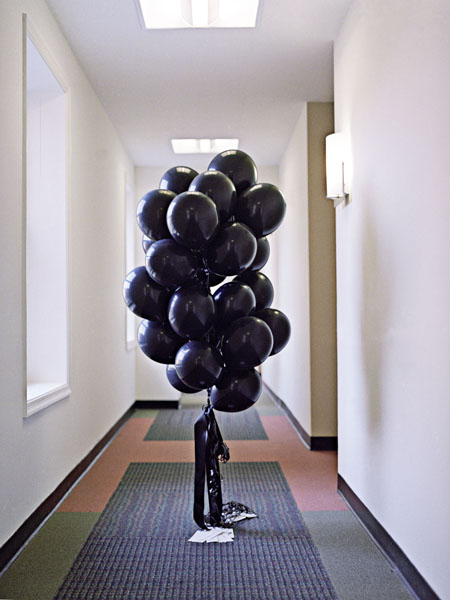 Where do you hope to take this work or where can the reader see it now?
Where do you hope to take this work or where can the reader see it now?
I would like to start considering the installation of this work in a gallery setting and looking at the possibilities that exist with the physicality of the work. I’m referring more specifically to the way in which the images can be hung such that it evokes the right type of reaction from a viewer. Playing with scale and the arrangement of the work on the wall can give a certain visual poetic three-dimensionality to it and add power to the images. But again, I’m going to have to try this, because for all I know it could turn out to be a disaster. I have been very actively applying for grants and fellowships to underwrite the costs of production for an exhibition before I start pitching the work to galleries. I have a studio visit/open studio planned for lat May here in Seattle, and I will be posting more details on my blog and website. I am also in the final stages of launching a new website, so keep an eye on that. I welcome any artists, curators and collectors to come by for a studio visit if you are in the Seattle area and share some work or start a dialogue.

Tonight is the opening reception for the GVSU Photo instalation class. More Info from the invitation:

There are more slaves in the world today than at any other time in human history. Sex trafficking is a huge part of this trade. The issue of sex trafficking has become more exposed to the public in the last decade but many in the U.S. still view it as a problem in far off countries.
There are estimated to be 325,000 CHILDREN trafficked for sex in the United States alone. The average age of entry into the commercial sex industry in the U.S. is between 12 to 14 years old. -The Polaris Project
The photo installation class at GVSU is addressing the issues of sex trafficking and how it is a topic that is closer to home than you think.
Wednesday, April 27 · 5:00pm - 9:00pm
240 Front St. Grand Rapids, MI If your around the downtown area stop by and say hello. More to come...
I'm always a huge fan of art that tries to inspire positive ideas out into the world. The Parking Ticket Emotional Reclamation Project seems to do just that. It's a guerilla project that tries to combat the emotional damage done by a parking ticket. The pterproject movement is happening in none other than art-hub NYC but none-the-less it's a pretty neat idea (assuming that the violator was a measly 5min walk from their return as opposed to say, blocking an ambulance, which they'd probably just get towed for that...but you get the idea). Hit the image for the link.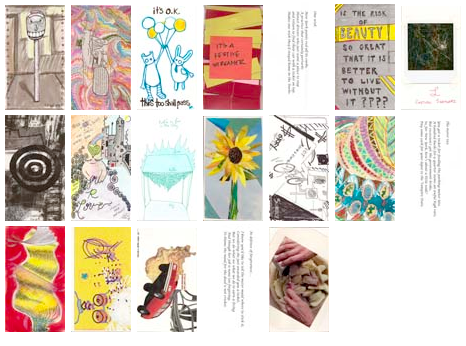 And there's a video...
(you might want to turn your volume down before this one, some rather jarring music a few seconds in)
And there's a video...
(you might want to turn your volume down before this one, some rather jarring music a few seconds in)
The Parking Ticket Emotional Reclamation Project from pterp on Vimeo.
Anyway, gotta any cool inspiring art ideas? There's going to be more inspiring work on the blog this week when I have the pleasure of hosting a discussion with Rafael Soldi about his work. More to come...
This should be really interesting. If anyone's in the GR area tomorrow I highly recommend you check it out.
 When
Thursday, April 21, 2011
7:00 PM
Where
Second Floor, Eberhard Center, GVSU Pew Grand Rapids Campus
When
Thursday, April 21, 2011
7:00 PM
Where
Second Floor, Eberhard Center, GVSU Pew Grand Rapids Campus
What a great honor to start off the week with a featured artist. Again, I had the pleasure of meeting Diane and discussing her work a bit in person. Furthermore, she was also kind enough to answer a few of my questions while allowing me to post the responses. Be sure to stop by her website to see the rest of the images from the series UnNATURAL History. It's well worth a look. And again, many thanks to Diane for taking the time to share her work and thoughts. The Artist Statement for UnNATURAL History: I am interested in the ways we objectify nature, both positively and negatively. The dancing, happy pigs used as icons for BBQ joints and meatpacking plants have always struck me as deeply ironic. Plastic animals take us for rides in theme parks and animated versions sell us products. Nature comes to us, viewed through glass windows at the zoo, natural history museum or framed on television. Likewise, the photograph objectifies the world as seen through the lens of the camera.
We visit natural history museums for a glimpse of our natural world, a world we often do not experience first hand. We view animals from far off places and times at a safe distance. Dioramas (and photographs) create a framed moment of nature frozen in time. The more closely they resemble an actual space and event, the more closely the taxidermied animals appear to breath life, the deeper our sense of wonder and connection.
It is this dichotomy between the real and the unreal, the version of life portrayed and the actuality of death, the inherent beauty of the animals within their fabricated environment and the understanding of its invention, that finds me both attracted and repelled.
**** [q&a] American traditions are often rooted in iconic images and advertising which manipulate nature by their own inherent qualities, how do you feel dioramas build upon or offer a new perspective into our relationship with nature?
When Carl Akeley created the first total habitat diorama in 1889 his purpose was to bring the wonders of nature to a public that, for the most part, could not experience it first hand. Natural history specimens before this time had generally been displayed on shelves within glass cases and without context.
Akeley not only provided an environment for his taxidermy based on casts, paintings and measurements taken in the field, but also created the method of taxidermy used today. Before Akeley animal skins were simply stuffed with wood or straw shavings. In Akeley’s method a clay model is molded onto the bones of the animal and sculpted in great detail before being cast and covered with skin. This approach made the animals appear even more “alive.”
Ironically, even though Akeley and his group killed thousands of animals to create his dioramas, he considered himself a conservationist, as did Theodor Roosevelt, an avid hunter who helped add to both the American Museum’s and Smithsonian Museum’s collections. Though animals are known to camouflage themselves within their natural environments, Roosevelt was among those who pushed for the animals to be prominent and unhidden within their displays. Thus many layers of the manipulation of nature were present from the diorama’s inception. As a viewer I respond to reflections and physical elements in the museum included in the frame as they seemingly bridge the elusion between reality and imagination, how do you come to terms with these unique visual cues?
The first photograph I took was of a diorama of an underwater pond in the Exhibit Museum in Ann Arbor, Michigan. I took the image thinking that it would reveal the kitschy construction before me. To my eyes, the pond looked utterly false. The surface representing the water was sagging and all the contents, from frog to fish to plants, appeared plastic. The light above the surface of the water was glaring. I was utterly surprised by the resulting photograph, which showed a magical, softly lit, underwater space. I had photographed for many years by that point and thought I knew exactly what to expect when my film was developed. The fact that I could be surprised by the resulting image completely fascinated me.
 The third museum in which I photographed was the American Museum in New York (one of Akeley’s). At that point I was examining the relationships between the two-dimensional and three-dimensional elements within the frame and how, when photographed, they flattened into an illusionistic space that in many ways seemed more real than the dioramas themselves.
The third museum in which I photographed was the American Museum in New York (one of Akeley’s). At that point I was examining the relationships between the two-dimensional and three-dimensional elements within the frame and how, when photographed, they flattened into an illusionistic space that in many ways seemed more real than the dioramas themselves.
It was during this visit that I turned the corner and saw a chimpanzee and human skeleton reflected on the glass of a case containing taxidermied chimps. The reflection extended the meaning of the image and asked even more of the viewer. It was with this discovery that I understood how my work could push beyond a simple reframing of the case and place emphasis on visual cues that address the separation of nature and viewer.
 One of my favorite images using reflection was shot recently in Bratislava, Slovakia. The photograph shows a family of deer in a forest; the doe and fawn eating grass while the buck stands at attention listening and looking out for danger. To the left, reflected on the case, a wolf approaches the group. It is interesting to consider whether this relationship between the displays was conceived by the exhibition designer or does my photograph reveal levels of meaning and associations that may have been accidental or subconscious.
One of my favorite images using reflection was shot recently in Bratislava, Slovakia. The photograph shows a family of deer in a forest; the doe and fawn eating grass while the buck stands at attention listening and looking out for danger. To the left, reflected on the case, a wolf approaches the group. It is interesting to consider whether this relationship between the displays was conceived by the exhibition designer or does my photograph reveal levels of meaning and associations that may have been accidental or subconscious.
 When photographing do you have preconceived visions you would like to search out?
When photographing do you have preconceived visions you would like to search out?
Working within the same photographic series, UnNatural History, for thirteen years has given me the opportunity to continually reexamine my subject and has lead me to many discoveries through the lens. Two of these have been discussed above; the blending of two and three-dimensional space and the use of reflection to extend meaning. I am also interested in playing with the merging of the painted background with the taxidermided animal; working with point of view to position the viewer face to face or within the path of the animal; and adding glimpses of elements which point to the diorama’s construction (the ceiling, lights, edges, etc.) to signal its artificiality.
I have recently begun working in color, something I have never really done as an artist. Unlike the black and white images, the color often points to the falseness of the scene. The decision to work in color came about in part because I switched from using black and white film to shooting with a digital camera. In doing so, I suddenly had a choice as to whether to leave the image in color or change it to black and white. The other aspect of the decision was that there are images that do not work as well in black and white because of the subject, the lack of contrast between the elements of the display and/or the beauty of the color within the scene. A couple of these considerations inform the first image I decided to leave in color, “Wrapped, Milwaukee Public Museum, Milwaukee, Wisconsin.” This shows a portion of the Africa area of the Public Museum in which a large display was leaking and several of the animals were covered in plastic for protection. Much of the poetry and edginess of the image was lost when changed into black and white.
 American culture responds to the presented image and/or performance, yet your work goes beyond the American experience and looks at those museums abroad. Has this led to any interesting conclusions?
American culture responds to the presented image and/or performance, yet your work goes beyond the American experience and looks at those museums abroad. Has this led to any interesting conclusions?
I have been fortunate to have had several opportunities to photograph in different countries: Rome and Florence, Italy; Bremen, Germany; Vienna, Austria: Bratislava, Slovakia; Toronto, Canada; and London and Bristol, England. Whenever I travel for work or play, in the US or abroad, I seek out natural history museums in which to photograph.
In many of the museums overseas the collections are quite old with the taxidermy arranged on shelves in glass cases and not within dioramas. This is not true for all museums, however. One of my most exciting shoots I have experienced was in the Übersee Museum Bremen in Bremen, Germany, which has beautifully composed dioramas. When there, I was so immersed in shooting that I did not notice that there was a fire and everyone had been asked over the public announce system to leave the building. Fortunately the fire was modest and contained to the museum kitchen, but I was escorted out by three visibly upset firemen.
One of the main differences I see in the museums overseas is the beauty and age of the architecture. In several images the architecture becomes a strong element within the image. This is especially true in Fish, Naturhistorisches Museum, Vienna, Austria in which the richly decorated ceiling occupies half of the image.
 Where do you hope to take this work or where can the reader see it now?
Where do you hope to take this work or where can the reader see it now?
I am very interested in getting this body of work into more solo and two-person exhibits. At this point I have thirty black and white pieces and thirty in color that are crated and ready to ship. The work just came down from the Haydon Art Center in Lincoln, Nebraska and I have several proposals out at this moment.
The best place to view the work at present is my website is www.dianefoxphotography.com
As the title suggests I have the honor of featuring the work of Diane Fox and her series an UnNATURAL History. Look for it next week as we discuss her series and some of the larger concepts behind the work. Until then have a wonderful weekend.
Cheers.
Another year, another national SPE conference come and gone. And while this is an incredibly late blog post I want to start out by saying thank you to all SPE employees and volunteers working hard, dedicating time, upfront and behind-the-scenes to make it all come together. A tip of the hat to all of you. The odd thing about this conference, and one or two in the past, is how little photographing I actually do. I used to photography quite a bit and I always go with the intent to photograph as much as I possibly can, but when the event actually happens, I fail in almost every way to break out the camera. Clearly I'm no photojournalist. Or maybe I am but simply should never get the assignments in which I would rather participate than photograph. What-ever-the-case, I believe at SPE I try to become a man of the people. With this conference, as with so many in the past, I had the pleasure to meet tons of artists creating fantastic work. I even have the honor to feature some of their work on this blog in the coming weeks as part of my ongoing artist series.
The whole conference was a fantastic opportunity to see some of the wonderful things happening in art + photography. Until I get the discussions together, I wanted to post the cards from those I directly met. To all of you: it was fantastic to talk with you and see what you were working on.
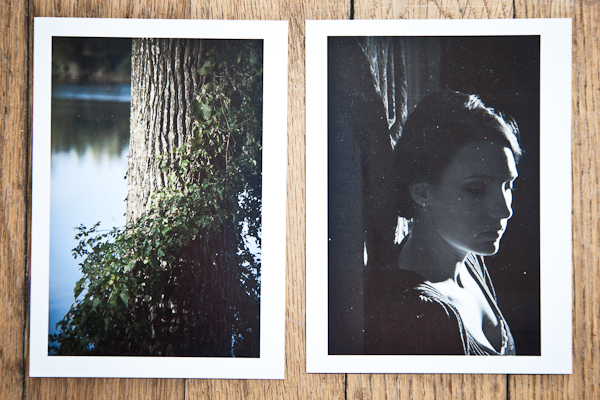
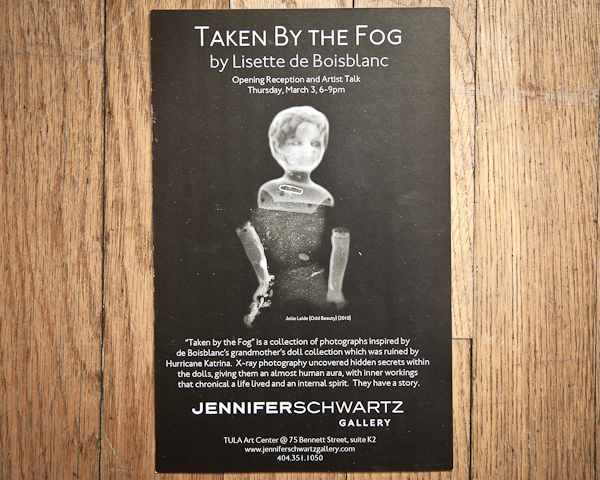





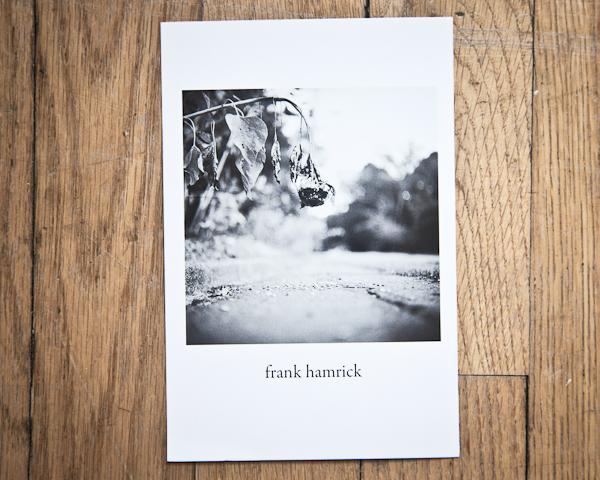



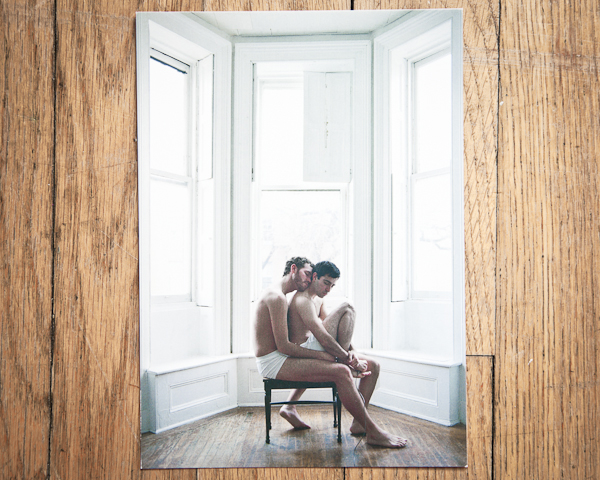
On one last note, some quick shout outs. Christin Boggs - awesome talk, really well done, maybe I'll speak at SPE someday : ) but until then, I totally enjoyed hanging out + talking art. Andy Super - Sorry man we never got that chance to sit down and have a chat. Where does the time go?? Drop me a line sometime. William Knipscher - your coffee stain print haunts my morning with memories of beauty, I thought the simplicity of that was great. It was wonderful to see your work. Lisette DeBoisblanc - congratulations on the solo show! Again, that's great! And to all the others, don't worry, I love you too : ) Look for new artists and some great conversations to develop on the website in the near future. Cheers.
I wanted to add some shots from the fantastic show that was Multimedia III, Alumni Invitational. It was a truly wonderful show with lots of great work from all mediums. It was an honor to participate.
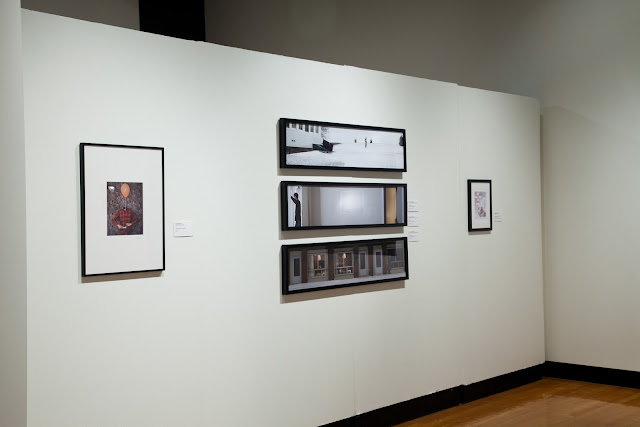


 Great show. More to come...
Great show. More to come...
Stay tuned for some new work to pop up on the main site too...
Cheers.